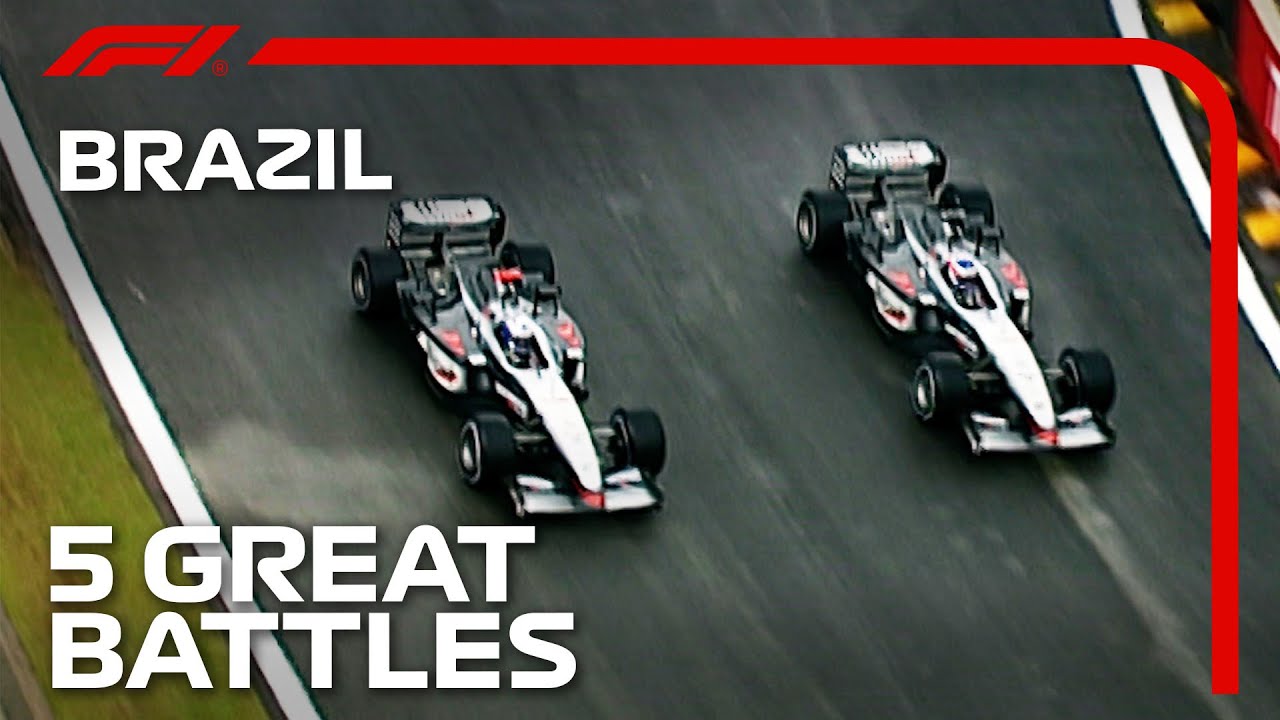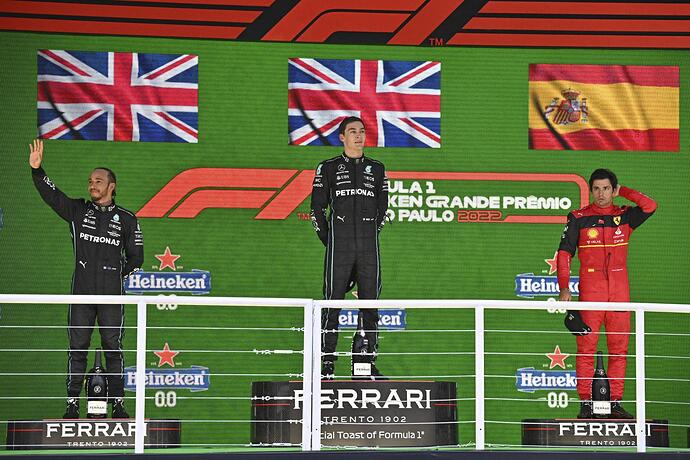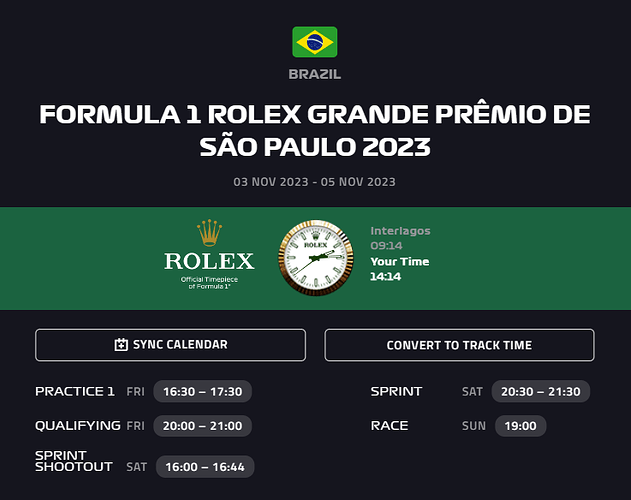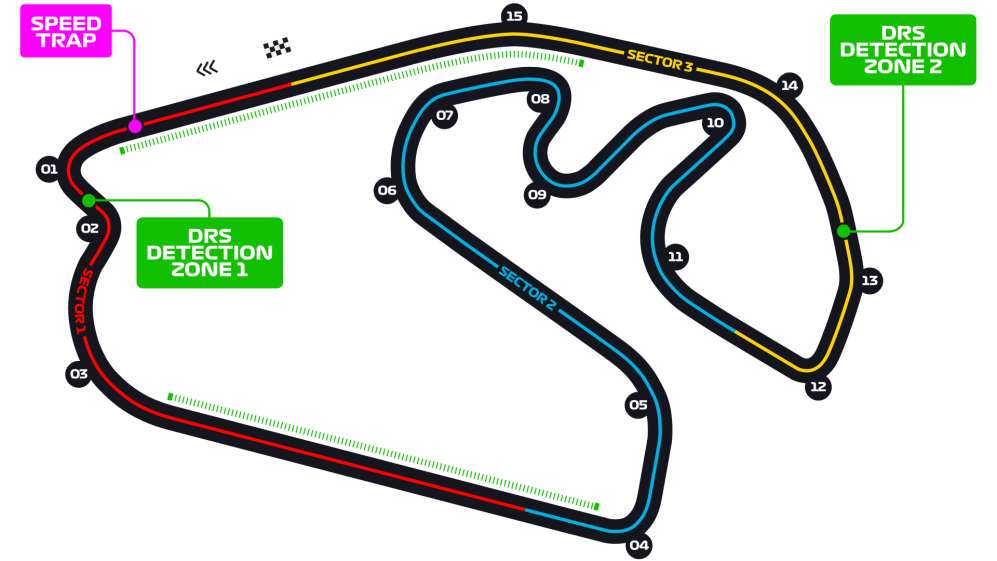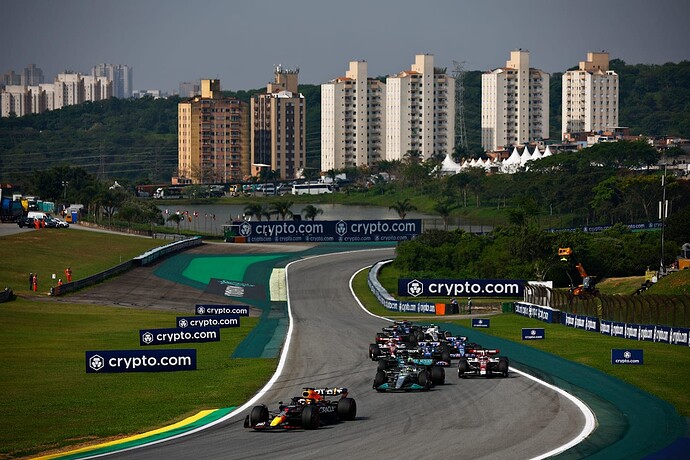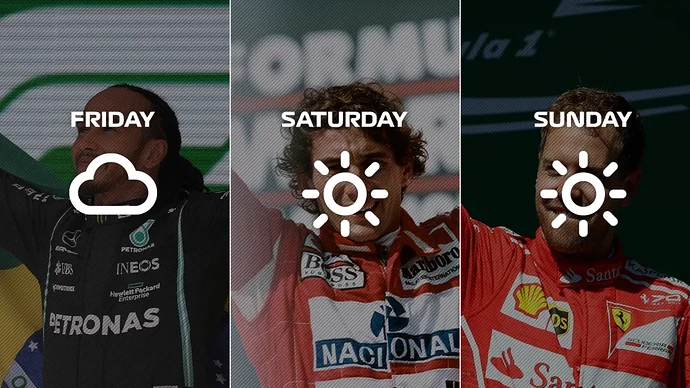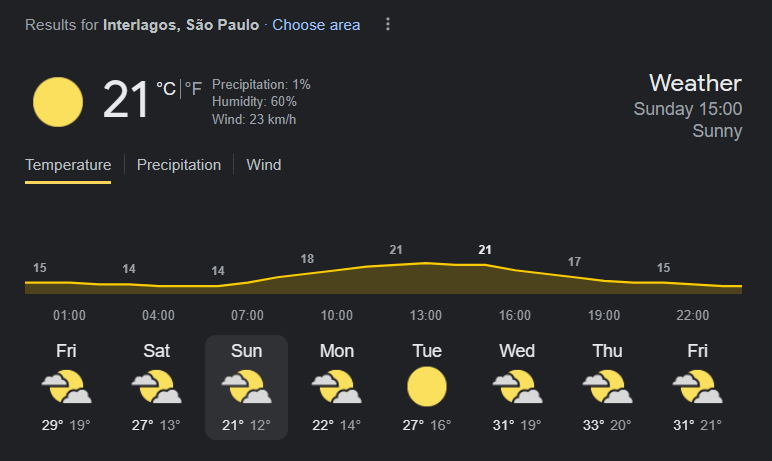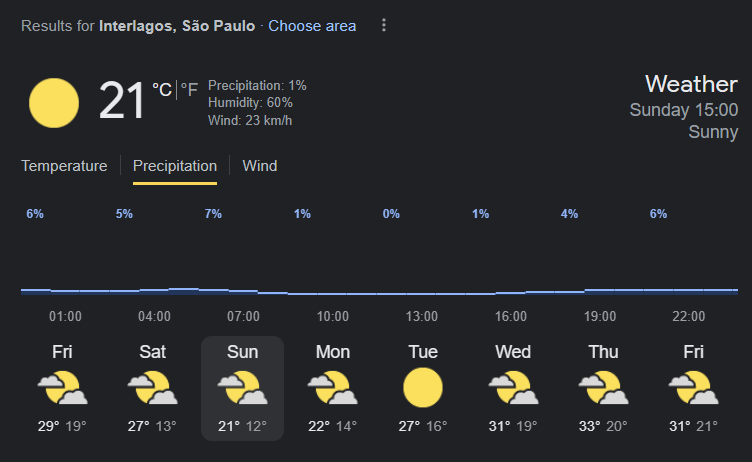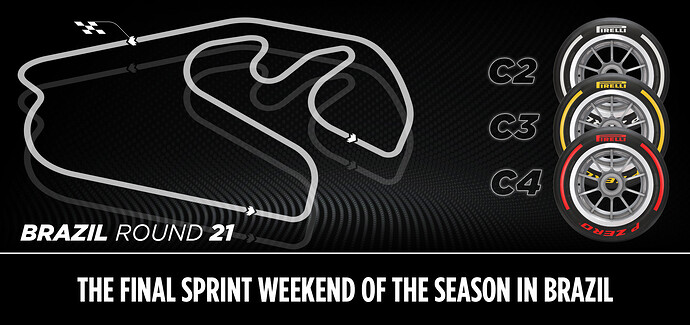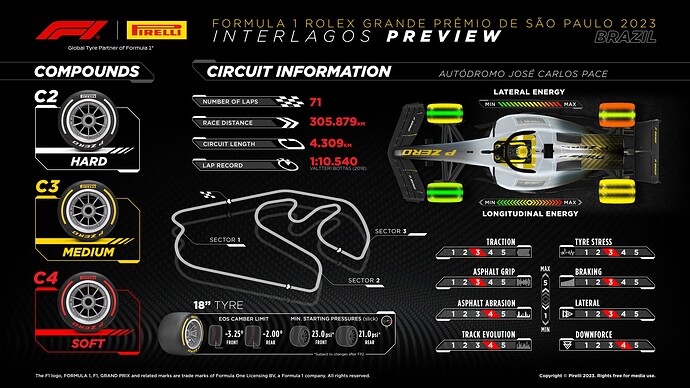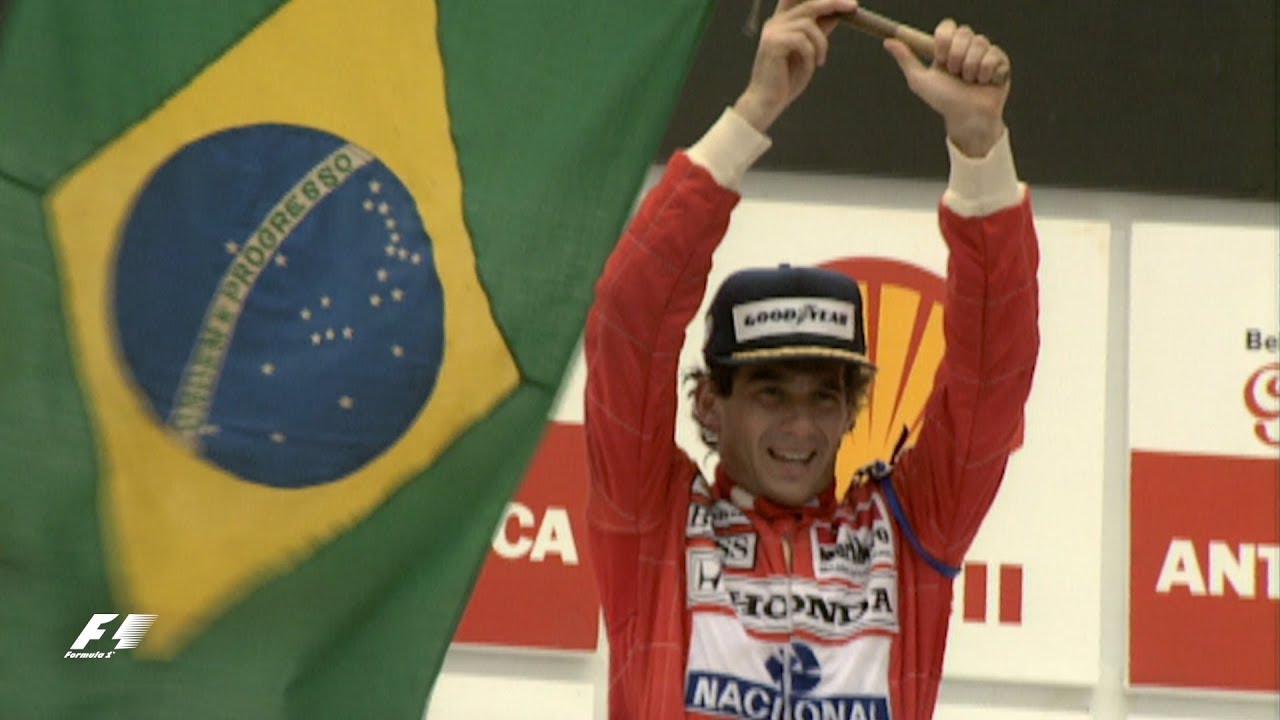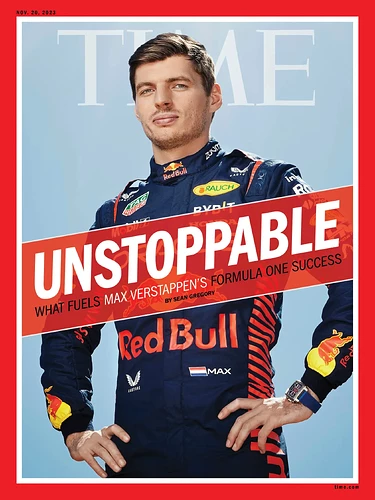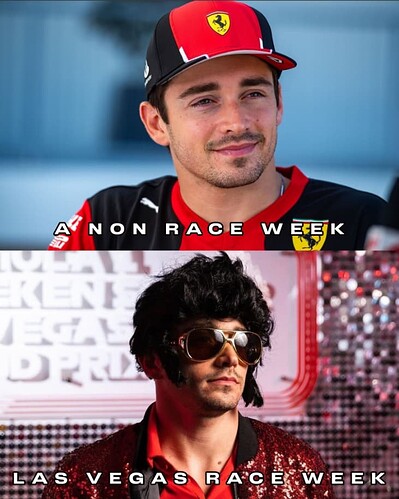Wtffffffffff switching from a super close race to a win(yes important but he was still far from done)
Ffs Ferrari letting Hamilton spoil your day again. Atleast Norris got Russel.
Aston Martin, als orait by die huis?
Hahaha no one gives a damn about those chairs. Always just one person sitting on them and on the wrong chair ![]()
2023 São Paulo Grand Prix 
Autódromo José Carlos Pace - Interlagos | São Paulo | Brazil | 5 November
2023 F1 Season - Round 21 (Sprint Race 6 of 6 / Grand Prix 20 of 22)
The third of the 2023 F1 Americas Triple Header this weekend, and we’re back to the legendary Interlagos for the Brazilian Grand Prix and Sprint Race. Max now has 16 race wins so far this year, and is still looking for more. But Brazil is one of those circuits that often creates surprises, and, with Mercedes on a bit of late season resurgence, it may not be a Red Bull on the top step come Sunday evening. Interlagos is not a favourite for the Red Bull team.
Russell won here last year, giving Mercedes their only win of the 2022 season, (and the last time a Mercedes driver finished a F1 Grand Prix in P1). With six of the last eight Brazilian GPs won by the Stuttgart team and Lewis Hamilton eager to grab the Driver’s Championship P2 from struggling Sergio Perez, this could be the best weekend Mercedes will have this year. And with it being the final F1 Sprint Race weekend, there’s a bunch of points on offer to help him in that quest. Lewis loves this place, and always seems to perform strongly here.
Five Outstanding Battles from Interlagos
Interlagos is a track which has delivered some incredibly tight battles over the years. Here are five of the very best, featuring the likes of Michael Schumacher, Lewis Hamilton and Kimi Raikkonen all fighting it out on track.
Vital Statistics - Brazilian Grand Prix
- First Grand Prix – 1973
- Track Length – 4.309km
- Lap record – 1m 10.540s, Valtteri Bottas, Mercedes, 2018
- Most pole positions – Ayrton Senna, Mika Hakkinen, Felipe Massa, Rubens Barrichello, Lewis Hamilton (3)
- Most wins – Michael Schumacher (4)
- Overtakes completed in 2022 – 62
- Safety Car probability – 60%*
- Virtual Safety Car probability – 40%*
- Pit stop time loss – 21 seconds
* From the previous five races in Sao Paulo
Last Five Poles
- 2022 – Kevin Magnussen (Haas)
- 2021 – Max Verstappen (Red Bull)
- 2019 – Max Verstappen (Red Bull)
- 2018 – Lewis Hamilton (Mercedes)
- 2017 – Valtteri Bottas (Mercedes)
Last Five Winners
- 2022 – George Russell (Mercedes)
- 2021 – Lewis Hamilton (Mercedes)
- 2019 – Max Verstappen (Red Bull)
- 2018 – Lewis Hamilton (Mercedes)
- 2017 – Sebastian Vettel (Ferrari)
Trivia
- Interlagos was built in 1938, on a plot of swampy land unsuitable for housing.
- The traditional name of the circuit, and of the neighborhood in which it sits, comes from the fact that it is located in a region between two large artificial lakes, Guarapiranga and Billings, which were built in the beginning of the 20th century to supply the city with water and electricity.
- The circuit is named after José Carlos Pace, who won here in 1975 for Brabham. Pace died in a plane crash in 1977.
The Schedule
More evening motor racing viewing this weekend, but not as late as the Mexico and Austin events thankfully. Brazil is 5 hours behind us, so Qualifying on Friday is at 20:00, the Sprint Race goes at 20:30 on Saturday, and the Grand Prix proper is off at 19:00 on Sunday evening.
The Race Strategy
Bernie Collins, former Aston Martin F1 strategist
Interlagos hosts the final Sprint weekend of the season and it’s generally easy to overtake here, which promotes multiple-stop races. It also makes the circuit a good contender for the Sprint weekend format [it is the only circuit to host the format in all 3 seasons since it was first attempted at Silverstone 2021].
On a qualifying lap around here, drivers actually need to begin pushing from Turn 13 on the previous lap. Teams would ideally like a tow out of the last corner in qualifying, so some may try to finish a lap behind someone starting a lap – that is very hard to manage.
The pit lane also covers a large portion of the track, with the pit exit between Turn 3 and Turn 4. As a result the saving under a Safety Car can be amongst the greatest compared to other circuits.
There’s also the grid to contend with – it’s not flat so drivers have more work to do to hold the brake on depending on their grid position. This doesn’t happen at all tracks. Additionally, the grid is at a very different height to the pit lane, which makes it difficult for teams transporting tyres and equipment to the grid quickly.
The race can often be rain affected due to the location between two lakes and some of the grid positions further back have rain grooves across them, which harms traction off the line.
Friday looks like there could be variable conditions with a risk of rain, in the worst case that could result in limited dry running before the Sprint Shootout on Saturday. Sunday looks like a much cooler day so it will be important to balance cooling across the weekend. Generally teams could run too hot for the short runs while banking on it being cooler for the Sunday long runs.
The Circuit
The Autódromo José Carlos Pace, better known as Autódromo de Interlagos or simply Interlagos, is a 4.309 km (2.677 mi) motorsport circuit located in the city of São Paulo, Brazil. It was inaugurated on 12 May 1940, by the federal intervener of the São Paulo province, Adhemar de Barros.
The traditional name of the circuit and of the neighborhood itself comes from the fact that it is located in a region between two large artificial lakes, Guarapiranga and Billings, which were built in the beginning of the 20th century to supply the city with water and electricity.
In 1985, the circuit was renamed to honor the Formula 1 driver José Carlos Pace, who died in a plane crash in 1977. Attached to its facilities there is a kart circuit named after Ayrton Senna. The circuit runs counterclockwise.
It is internationally known for hosting the Formula 1 Brazilian Grand Prix stage and the Lollapalooza music festival. It has hosted the Formula One Brazilian Grand Prix since 1973.
When was the track built?
- Building work began on what ended up being called the Autodromo Jose Carlos Pace – but what is more commonly referred to as Interlagos – all the way back in 1938. The track designers took their inspiration from three main circuits: Brooklands in the UK, Roosevelt Raceway in the USA and Montlhery in France.
When was its first Grand Prix?
- Buoyed by the success of Brazil’s Emerson Fittipaldi, Formula 1 first jetted into Interlagos for a world championship race in 1973. Fans were treated to a home win in the first three Brazilian Grands Prix, with Fittipaldi victorious in 1973 and 1974, while Carlos Pace won in 1975.
What’s the circuit like?
- Like many pre-World War II tracks, Interlagos features banked corners, with the drivers beginning their lap on a sort of half oval – in fact, between 1957 and the track’s return to the F1 calendar in 1990, Interlagos could be run as a giant oval. After wiggling through the Senna S and down to Turn 4, the drivers then go through a snaking in-field section with some challenging camber changes, before slinging back up the hill and through the banked final turn.
The Driver’s View
Jolyon Palmer, former Renault F1 driver
Interlagos has a tricky first corner, you can brake much later than you imagine and carry speed into the apex – but go too late and it’s easy to lock up the front left.
The middle sector here is all about the flow, the corners come thick and fast. One lock-up in either of the tight right-handers and it puts you off line and out of sync for the whole lot. It’s easy to lock up as well because you are loaded laterally on the entries there. It’s a technical sector where the rhythm is everything.
The final corner is critical, it’s all about exit speed to carry you onto the whopping straight back up the hill. You’ve got to get the right balance between opening up the corner and taking too much kerb as well, which can unsettle the car and cost you exit speed.
Overall it’s a short but fun circuit to drive. The anti-clockwise nature and long, loaded left-handers make this one a bit harder physically for the drivers as well. By the end of this race you might be feeling it on the neck, which isn’t used to being loaded up so much on that side.
The Weather
The weekend weather looks very variable, to say the least. High levels of humidity could bring showers throughout the weekend, but especially on Friday. Currently, the Sprint Race and the Grand Prix look likely to be dry, but that could still change suddenly.
Friday – Free Practice 1 and Qualifying
- Sunny at first in the morning. Unsettled with threatening cumulus clouds developing in the afternoon. Moderate chance of showers, possibly thunderstorms, in the afternoon and evening.
- FP1: 30°C | Q: 26°C
- Chance of rain: 40%
Saturday – Sprint Shootout and Sprint Race
- Mainly sunny from the late morning. Sessions expected to be dry. Light to moderate Westerly wind at first backing progressively Southeasterly for the Sprint.
- SS: 25°C | SR: 20°C
- Chance of rain: 20%
Sunday – Grand Prix
- Mainly sunny and dry conditions expected all day long. Light to moderate Southeasterly breeze for the Race.
- GP: 23°C
- Chance of rain: 20%
The Tyres
The Interlagos circuit in the Brazilian city of São Paulo is well-known for providing thrilling races. The lap is only 4.309 kilometres long, making it one of the shortest of the year, with only Monaco and Mexico City being shorter. It’s also run anti-clockwise and situated on a hillside, which gives it a unique character. The drivers face a steep downhill section after the first corner, followed by a long climb uphill with several winding turns, and then a long straight leading back to the finish line.
The track has 15 corners – five right-handers and nine left-handers – with several direction changes. Interlagos has a bit of everything, featuring low as well as medium speed corners, and the cars running quite a high level of downforce. The forces acting on the tyres are reasonably balanced between lateral and longitudinal. The asphalt itself has a high level of roughness: typical of permanent tracks with a long history behind them. Degradation is mainly thermal, so the C2, C3, and C4 compounds have been chosen. A two-stopper is the most likely strategy, while a one-stopper would require plenty of tyre management; affecting race pace.
The safety car has often featured during the grand prix, introducing another key variable, and we have also seen that weather conditions can vary rapidly and widely at this time of year as well. Interlagos will additionally host the final sprint round of the season, giving the teams and drivers another chance to assess tyre behaviour over long runs. Since sprint races came in for the 2021 season, Interlagos has always been one of them – a sure sign of how this track consistently delivers the sort of close racing that suits the sprint format.
~Mario Isola - Pirelli Motorsport Director~
The Tyres on Track
- The three compounds chosen for the Brazilian Grand Prix are C2 as P Zero White hard, C3 as P Zero Yellow medium, and C4 as P Zero Red soft.
- Mercedes has won the most races at Interlagos since the Brazilian Grand Prix adopted the name of its host city, with Lewis Hamilton and George Russell winning in 2021 and 2022 respectively.
- Interlagos has hosted 39 world championship grands prix in total, with Ferrari winning 10 times and Michael Schumacher being the most successful driver on four wins.
- The Brazilian Grand Prix has also been held at the Jacarepaguà circuit in Rio de Janeiro 10 times.
- Kevin Magnussen gave Haas its maiden pole position last year, making the most of his soft compound tyres in the rain at the start of Q3. It was also the Dane’s first (and so far only) pole, ahead of his eighth place in the sprint race the following day.
The Programme
The free Digital Race Programme for Brazil is a goodie. The programme this week includes features on rising Brazilian star Felipe Drugovich, Aston Martin’s F1 reserve, and on Mercedes’ George Russell and his frustrating season - plus stats on all 10 F1 teams.
Find it at F1 Race Programme. Remember, the Digital Race programme is designed specifically for viewing on mobile devices. It can be viewed on a desktop, just not as effectively or with the same level of interactivity.
Iconic Moment
There are countless memorable moments from the career of Ayrton Senna, but one particular highlight came when the three-time champion scored an emotional victory in his home race during the 1991 season. Having started from pole position, Senna led for 65 laps before the gearbox on his McLaren started to fail. With the rain clouds gathering and just one gear available to use, the Brazilian driver managed to make it across the line in P1, marking the first time that Senna had claimed a win in front of his adoring fans.
Corra rápido no Brasil! ![]()
Stroll on the second row… please just leave Le Clerc alone man. I expect chaos.
My fok. I was so worried about Stroll that I forgot that Ferrari can also get to Le Clerc ![]()
Woooooaaah what a finish. Daaaamn!
Ctrl Z Aston Martin is fast Aston Martin.
When the new car specs were designed they were purposefully being made slower and I recall something like 2 seconds were mentioned. Lando did a 1:10.622 for the Sprint Qualy. The record was set in 2018 by Bottas and is 1:10.540… They are catching up to those records again!
![]() Ctrl Z Aston
Ctrl Z Aston ![]()
Lol yeah they said they took off all the upgrades and now the car is fast again ![]()
Guess they’re finding out exactly what that “…and any other marketing events as required” clause in the contract means for real now. ![]()
I wonder if there will be another cringey driver entrance parade?
Its almost guaranteed ![]()
ya there is one. not sure where I read it but yes they will have one
Pretty cool, and I just posted the Pikes Peak video of her yesterday. She’s doing crazy well for herself. Daddy Block smiling down.

